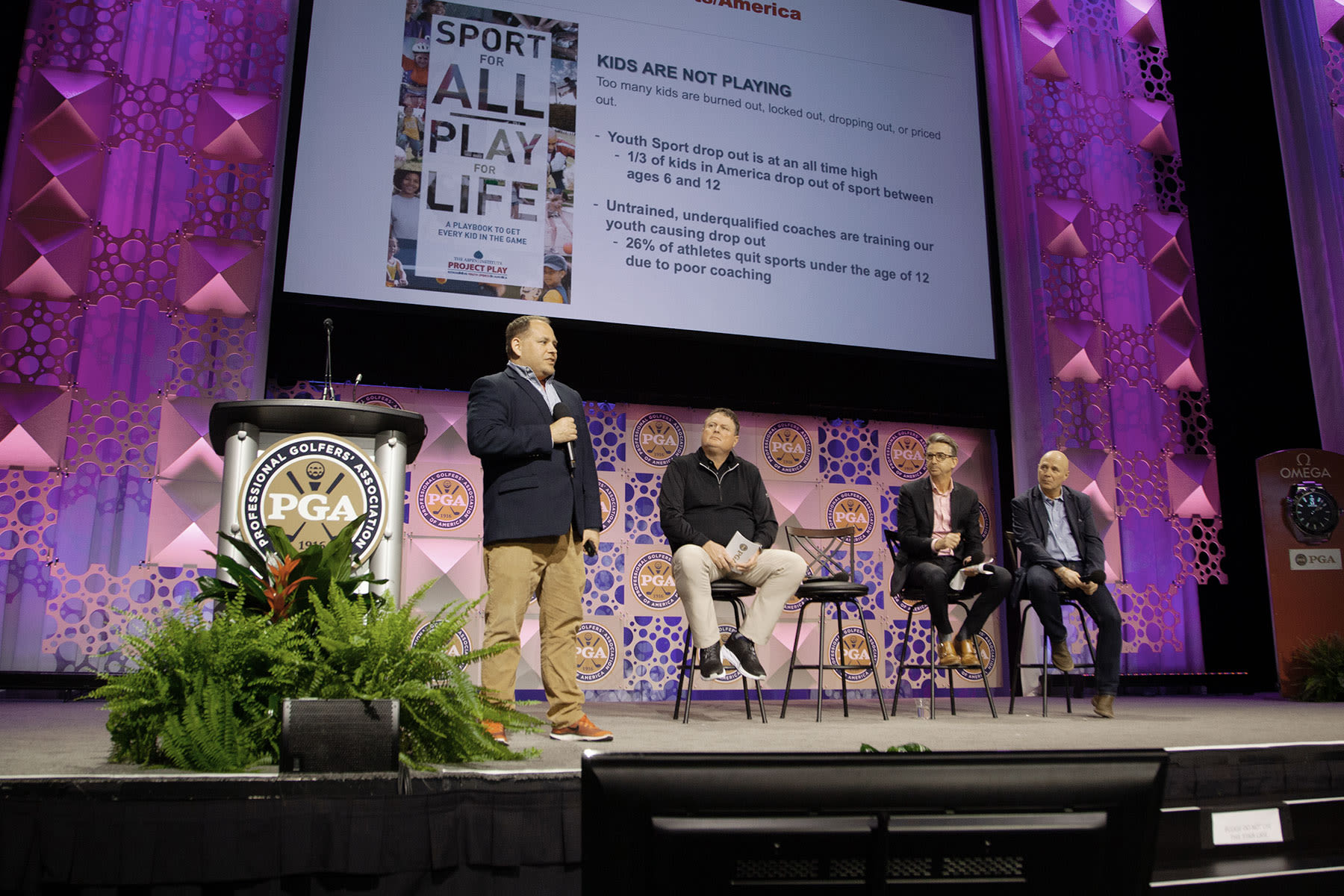From the PGA
How the PGA of America is utilizing the American Development Model to grow golf
By Dan McDonald, PGA.com
Published on

PGA of America
The main pillars of the PGA of America are to grow the game of golf and support its 29,000 PGA Professionals around the country, and programs such as the American Development Model are a perfect extension of these core objectives.
On Wednesday at the PGA Merchandise Show, Chris Snyder, Director of Coaching at the USOPC, Craig Morris, CEO of Community Tennis at the USTA, and Dr. Steve Norris, a world-leading expert on long-term athlete development, presented the American Development Model and how they are working in partnership with the PGA of America to create the future of sport and coaching.
A closer look at the American Development Model
The American Development Model (ADM) was created out of an abundance of need to restructure how kids were interacting with sports.
According to Snyder, about a decade ago 73 percent of girls dropped out of sports by age 13 and 62 percent of boys stopped playing sports by the age of 12.
When looking further at the numbers, the USOPC discovered that 26 percent of kids that stopped playing a sport said it was because of bad coaching.
In order to create an atmosphere where sports are fun again and kids are able to have positive experiences with their coaches, the ADM was created.
The key principles of the ADM are to:
- Provide universal access to create opportunities for all athletes
- Utilize developmentally appropriate activities that emphasize motor and foundational skill development
- Encourage multi-sport/multi-activity participation
- Create a fun, engaging and challenging atmosphere
- Provide quality coaching at all age levels
“We at the U.S. Olympic and Paralympic Committee are challenging all 50 of our national governing bodies and our 20 paralympic sports to say by 2024, why doesn’t everybody have this (ADM model)?,” said Snyder.
“If we do, America will continue to be at the podium, and we will continue to have stories to tell the next generation about how sport keeps us strong and keeps us connected.”
The ADM and tennis
One partner that has been instrumental in the PGA of America’s adoption of the ADM is the United States Tennis Association.
“As we started to look at tennis and how to get more kids into the game, we really needed to look at how we positioned the sport to our consumers, and that’s our parents and our kids,” said Morris.
For the USTA, Morris said the American Development Model was of great importance because it allowed the organization to not just focus on building tennis skills, but position the sport as one that builds character, problem-solving skills and gets kids physically active — traits parents are looking to develop in their children.
The USTA’s Netgeneration program — built around the principles of the ADM — helped provide quality resources for parents to find certified coaches near them and a host of trusted information for both coaches and parents.
One strong parallel between tennis and golf is the individual nature of each sport. Through the ADM principles, it’s important to provide as many opportunities for team environments as possible to foster more enjoyment for kids.
The PGA of America’s PGA Jr. League provides strong team opportunities which parallels the USTA’s emphasis on starting kids off in a team setting and then building upon that base with support and skill development.
Breaking the mold
It’s been a widely-held attitude that the progression through sports is linear — you start in your youth and if you have success, you move on to the next level. If you don’t make the travel or varsity team, or don’t move on to play in college or professionally, you stop playing and move on to something else.
Dr. Norris discussed how by breaking that mold of how kids advance through sports, they’re more likely to enjoy actually playing the sport and thus continue playing it throughout their lives.
According to Norris, the ADM creates a golden thread to play the game at different points of life and at different levels of competition which goes against the mold of a linear progression through sports.
Snyder further elaborated that it’s not a mold athletes are looking for; “Kids at a young age need competence, confidence, connection and character.”
“We’re educating parents that it’s not about (earning a scholarship),” Morris added. “It’s actually about longevity and living a full life instead of the short-term aim of earning a check.”
By implementing this revolutionary ADM model — and working with organizations such as the USOPC and USTA — the PGA of America is helping to break old molds to foster more enriching experiences between golf coaches and golfers of all ages and abilities.
In the end, adoption of the ADM model across all sports has created a stronger relationship to the games we love, and in the case of golf, will help grow the game for the next generation.
#2020 PGA Merchandise Show